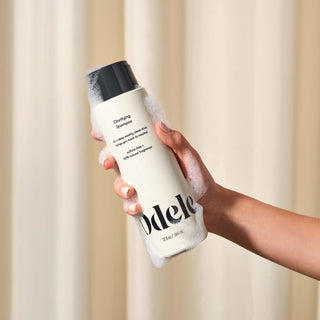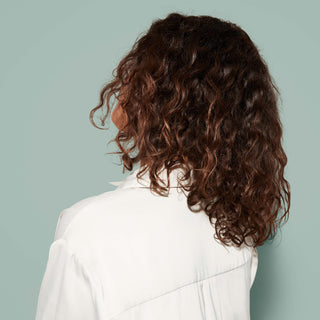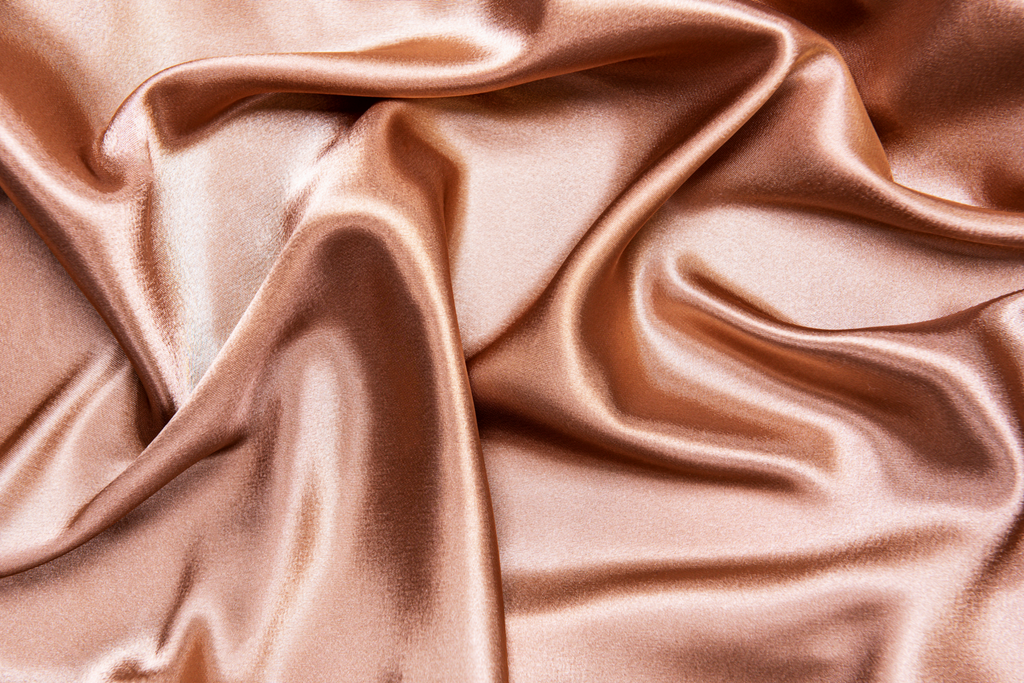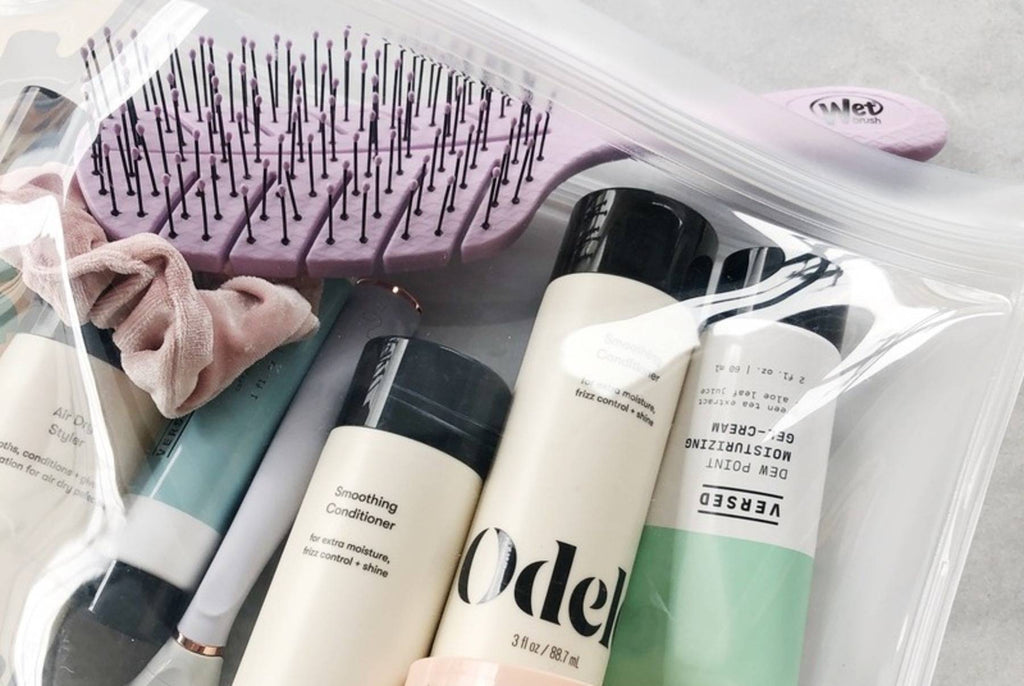Some people swear by their daily shampoo, while others are perfectly fine going weeks between wash days. But how much washing is actually necessary for healthy hair?
Even among stylists and dermatologists (and the Odele team!), there’s no consensus on the ideal shampoo schedule. We each have a unique head of hair that comes with unique needs. How often you choose to wash yours is a matter of hair type, lifestyle and personal preference (plus a few more factors we’ll get into below). That said, it is possible to over-cleanse and under-cleanse, both of which can damage your hair.
So, how do you figure out your ideal washing frequency? Get in tune with your body and get familiar with the different factors that impact your hair and scalp health, and see how your current cleansing habits stack up. Here are the most important things to consider.
1. Pay attention to your scalp.
Start at the root—literally. From time to time, part your hair and see what's going on up there.
A healthy scalp should look clean and clear. But if your head’s itchy, flaky or sensitive, it could be a sign that you need to scale back (or step up) your shampoo routine.
As sebum (the skin’s natural oil) builds up on the scalp, it traps dirt, sweat, dead skin cells… and pretty much whatever else is floating around you. Without proper cleansing, that buildup can lead to clogged pores, dull, greasy strands and dandruff (no, thanks).
On the flip side, over-washing or washing with a shampoo that’s too harsh can strip sebum from the scalp and cause major dryness.

2. Understand your hair type.
This is the second most important consideration when determining how often to wash your hair. Scientifically speaking, your hair type (i.e., the texture and thickness of your strands) matters because it physically affects how quickly sebum spreads from your roots to ends (read: how quickly your hair gets oily).
Generally, the curlier or coarser your hair, the less often you need to wash it. Though cleansing needs will vary from person to person (and also depend on the other factors on this list), here’s a basic starting frequency for each hair type:
Straight (Type 1)
Straight hair tends to get oily fast since it’s easier for sebum to travel down the hair shaft. Try shampooing every other day.
Wavy and loose curls (Type 2-3)
Two to three days a week is typically a good place to start!
Tight curls and coils (Type 3-4)
Sebum has a harder time traveling down corkscrew strands, so try shampooing no more than once a week to retain moisture and reduce physical stress on your hair.
Dealing with damage (due to chemical treatments, heat styling, dyes, etc.)? Wash even less—damaged hair cuticles are extra fragile and need lots of TLC.
Not all hair cleansers are created equal, so make sure you’re washing with one that’s specifically formulated for your hair type.
Thirsty curls and coils should be cleansed with a gentle, moisturizing shampoo—that’s why we made our Curl Defining No-Lather Shampoo with chelating agents that are strong enough to pull out the bad stuff (pollutants, dirt) but gentle enough that they don’t remove the good (nourishing natural oils).
Fine, oily locks, on the other hand, can benefit from a volumizing shampoo that clears volume-deflating buildup and hydrates without weighing hair down.

3. Consider your styling habits.
The products, treatments and accessories you use on your hair can impact how often you should cleanse it.
Products
The more gels, sprays, leave-ins or curl creams you put on your hair, the more diligent you’ll want to be about regularly cleansing to bust through any buildup.
Color treatments
Frequent washing fades color faster. If you have color-treated hair, washing less often can keep your color looking fresh longer. (So can using a sulfate-free shampoo.)
Protective styles
Braids, twists, weaves and extensions are great for giving your hair a break—just be sure to keep up with regular cleansing when you wear them.
4. Don’t sweat a little sweat.
No surprises here: Sweat can spread sebum, trap dirt and lead to smelly hair.
If you’re working up Peloton-class-levels of sweat daily, it’s only natural to want to jump straight in the shower afterward. But according to dermatologists, you actually don’t need to wash your hair after every sweat session (cue cheers). A quick rinse with water to wash away the salt can help hold you over until your next shampoo and keep you from drying out your mane.

5. Adapt to your environment.
Everything from pollution to temperature can affect the state of your hair, so take into account where you live and the seasons you experience there, too.
Dry air = drier hair, so you might benefit from washing less frequently. High heat and humidity can make the scalp feel oilier, and more frequent washing could be the solution.
If you live in a large city, pollutants in the air could be drying out your hair as well. Pro tip? A good chelating shampoo can help purge your hair of pollutants.
6. Know it can fluctuate with age and hormone levels.
Just as our skin care needs change with age, so do the needs of our hair and scalp.
Your sebaceous glands (the ones that produce sebum) are controlled by hormones, so they may be more or less active depending on age. Hormone spikes during puberty, for instance, can make the oil glands extra active—hence the greasy hair and B.O. associated with those oh-so-awkward years.
As we age and our hair loses pigment, however, those glands shrink and begin to produce less oil, causing the hair and scalp to become drier. So if you’re going gray (whether you dye it or let it shine freely), you may not need to shampoo as often as you used to.











